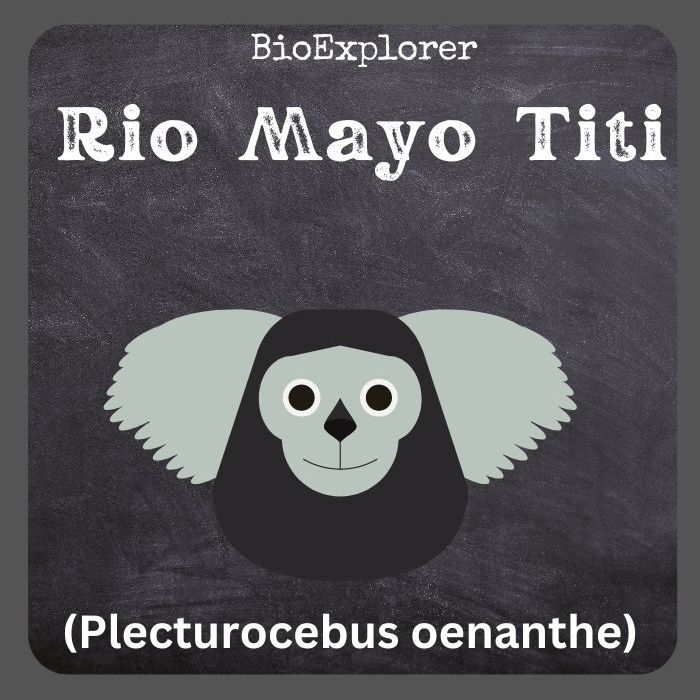
| Animalia | Primates | Pitheciidae | Plecturocebus | Plecturocebus oenanthe |

- Common Name: Rio Mayo Titi
- Taxonomy Classification Year: 1924
- Monkey Size: 29 to 45 cm (11 to 18 in)
- Skin Color(s): Brown or orange to dark brown
- Habitat: Forest, rainforest
- Diet: Omnivorous
- Native Countries: Peru
Rio Mayo Titi Distribution
Rio Mayo Titi Characteristics
The Río Mayo titi[1] (Plecturocebus oenanthe), also known as the San Martín titi, is native to the San Martín region of Peru and is considered Peru’s most endangered primate.
- They live in low-lying secondary forests and are often seen in bamboo groves, fruit clusters, grape vines, and palm-dominated forests.
- At first glance, Río Mayo titi appears to have round, robust bodies. This is because their dense fur obscures their actual body shape and sometimes makes them look like growth on a branch – great for hiding from predators!
- They use a long, intangible tail to balance themselves on branches.
- They also have a variety of color types: individuals in the northern part of their range are more likely to have brown bodies with a white mask, while those in the south are more likely to have orange to dark brown bodies and no mask.
- Sometimes pairs of different colors have common offspring.
Rio Mayo Titi Facts
- Río Mayo titis are diurnal, like most New World Monkeys. They wake up with the sun and stay active until sunset.
- They have two main feeding periods throughout the day with a break in between and spend most of their waking hours eating.
- They are arboreal and quadrupedal and generally move with short hops. They are rarely seen on the forest floor.
- Río Mayo titis have been described as somewhat temperamental and hesitant and don’t tend to be inquisitive.
- Babies are born a uniform agouti color and begin to develop their white mask, if they have one, at around 5 weeks.
Suggested Reading: Types of Monkeys By Breeds
Cite This Page
APA7MLA8Chicago
BioExplorer.net. (2025, November 08). Rio Mayo Titi. Bio Explorer. https://www.bioexplorer.net/animals/mammals/monkeys/rio-mayo-titi/.
BioExplorer.net. "Rio Mayo Titi" Bio Explorer, 08 November 2025, https://www.bioexplorer.net/animals/mammals/monkeys/rio-mayo-titi/.
BioExplorer.net. "Rio Mayo Titi" Bio Explorer, November 08 2025. https://www.bioexplorer.net/animals/mammals/monkeys/rio-mayo-titi/.











